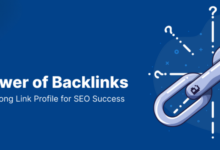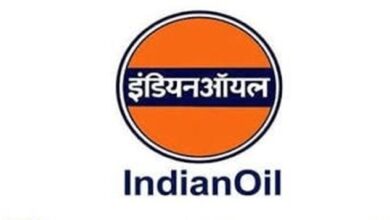
Successful Fundraising in the 21st Century: New Tips for thriving and surviving
An arduous process can lead to a successful funding round
A seed round takes, on average, 18.5 weeks from the first meeting with a VC until you have money in the bank. You should plan to pitch your heart out to multiple investors during that period and meet with them in person or virtually.
Additionally, you must constantly tweak your narrative (and pitch deck), manage each meeting, and follow up on feedback. If everything goes well, term sheets and final closing details are then negotiated. Meanwhile, running a startup with equal intensity is also required.
Transparency about how investors receive your pitch deck puts you at an advantage.
To make the most of this critical stage in your company’s growth, how can you prepare, navigate the complexities of a fundraising campaign, and still run your business effectively? There is no one-size-fits-all fundraiser, but founders can learn from the experiences of others who have successfully raised funds to maximize their fundraising efficiency.
It is possible to do this qualitatively and quantitatively. You can draw on both your network of peers that have recently been through the fundraising process, as well as seasoned experts that have valuable insights to share.
There’s a lot of data on the fundraising process available that can help you remove the mystery and uncertainty. You will be able to present a well-tuned pitch to the right investor if you have apparent data on where VCs spend their time on pitch decks or in meetings.
The fundraising landscape has seen unprecedented growth this year. There have been continuous records broken in deal dollars, and VC demand and startup supply have risen steadily since April 2020. While investors appear to be tilting toward founders, different expectations depend on the round of funding.
 Founders pitch their startups more often, so funding rounds are becoming more competitive. In the following, I’ll outline a few essential steps each founder must take during their fundraising journey, and provide proven, data-driven strategies they should use to accomplish that goal.
Founders pitch their startups more often, so funding rounds are becoming more competitive. In the following, I’ll outline a few essential steps each founder must take during their fundraising journey, and provide proven, data-driven strategies they should use to accomplish that goal.
When fundraising, you need the right pitch deck
The key to getting funding is a good pitch deck. Your presentation is the first impression you make on a VC, and since the VCs are going through decks at record speeds (2 minutes and 34 seconds per deck), yours better stand out. To show your investment in the company and the worth of your idea, your business plan must demonstrate its value and purpose.
The DocSend team has found that startups that have raised money have common elements to their pitch decks based on an analysis of deck compilation and metrics. By breaking your presentation down by stages, you can see what order to put your slides in, which sections to include more detail, which departments will attract the most attention, etc.
For instance, when raising seed funds, our data shows that pitch decks for startups that have successfully raised $2.7 million in that round are 14 sections and 19.5 slides, and investors spend 3 minutes and 20 seconds looking at the deck. Here are the top five slides you should include in your deck, in order:
- Purpose of the company
- Concern
- The solution
- Size of the market
- Why now?
The story your pitch deck tells is the tool that can bring you funding, while a meeting with an investor is the key to getting one. VCs will only be interested in your pitch deck for a short period, so you should compile a strong one.
Getting investor meetings and contacting investors
Getting in front of investors is one of the most challenging parts of fundraising. If you have the best idea, you still have to attend many meetings within a relatively short period, which should be around two weeks.
According to our data, founders at the seed stage make an average of 99 contacts and set up 39 meetings with investors.
How can so many meetings be crammed into so short a period? Creating demand and urgency is necessary. You want to have the ability to consider multiple offers in those two weeks to compare them and negotiate the best price.
If your pitch is good, a lot can happen in those two weeks, and you want to be prepared to field multiple offers. As a founder, you must plan how much time outreach and meetings will require and then balance them with your other commitments.
Get feedback on your idea from different experts and viewpoints across the industry by tapping into your network. Make sure you ask for introductions if you want to expand your network of potential investors.
Using LinkedIn and sending a forwardable introductory email is one way to achieve this.

In our early days, talking with others proved to determine if DocSend would find a market. To gain competitive intel and further validate my idea, I even spoke to competitors I thought were more significant, such as Google, to find out why they weren’t developing similar products.
Including your potential competitors in the feedback you seek will help you overcome the difficulties you face. Your pitch will be more effective, and you will get closer to landing the investor meeting.
Meeting investors requires time and strategy, and the more people you talk to, the more likely you are to succeed. Don’t let a lack of an investor meeting stop you from reaching out to others who are mutually desirable.
Our study found that pre-seed stage entrepreneurs were successfully met with 30 investors on average out of 58 they contacted. In terms of a meeting’s frequency, there is a sweet spot where you can remain productive without reaching a point of diminishing returns.
Staying enthusiastic and motivated despite being denied brushes is imperative. Knowing when to cease is just as important.
Investor engagement and interest visibility

It has not been easy to understand the fundraising process until recently. By monitoring how investors engage with your pitch deck – including how many opened it, how long they spent looking at it, and which sections they prefer to focus on – you will gain an advantage.
By knowing when, why, and how an investor has processed your pitch deck, you no longer have to wonder if they have ever seen it. Founders only have one chance with one pitch deck, while investors spend a lot of time studying pitch decks.
Making the founding team more aware of the process helps even out the playing field, ultimately resulting in an open, efficient process.
Founder and CEO of UserGems Christian Kletzl used DocSend to share his pitch decks with investors and was surprised to find a level of visibility he hadn’t expected.
One of the investors who weren’t interested in our round kept returning to our deck. “They probably want to fund someone who has an idea similar to yours,” Kletzl said. I have changed my approach to fundraising because of that transparency.
Each party to any business relationship has its own “currency.” In fundraising, VCs have their currency — dollars that they can invest.
You can take control of the fundraising process by analyzing investor interactions using your pitch deck, which is your currency. The pitch deck is the currency of a founder’s business idea, which must be communicated.
Creating a narrow funnel for a successful fundraising campaign

Investors often meet with you through your pitch deck. Don’t be surprised if you contact many more investors than you’ll meet. Prepare yourself and make the most of the meeting once you get it.
Fortunately, there are some tools to help you connect with potential investors. Nyasha-Harmony Gutsa, the co-founder of Billy, says pitches night virtual events are a great way to practice your pitch for investors.
These days, you may be more likely to have a Q&A meeting with an investor than presenting a formal deck. The VCs should know your idea, business model and other fundamentals from your deck. Before you even arrive (or log into Zoom), they ask several questions.
Perhaps the initial meeting is not the most important one when you start fundraising. Many meetings are required, which may feel exhausting at the time, but they lead to more meetings or, at the very least, are good learning experiences.
Even asking one of your peer’s hard questions could help you prepare for the first meeting. Test your knowledge by practising.
Make sure you time your meetings to prepare you for the next. Your ideal investor is toward the end of your series of meetings, allowing you to make an airtight case for your business and position yourself to negotiate effectively.
There have been other individuals who have tread this path before, even though each story is unique. Some have succeeded; others have failed. Being prepared can help alleviate known stress during the fundraising phase of your business.
Additionally, some services evaluate pitch decks to help you better perfect your pitch and even hard data that will remove the mystery.
To better control your fundraising experience, take advantage of these insights and tools.






